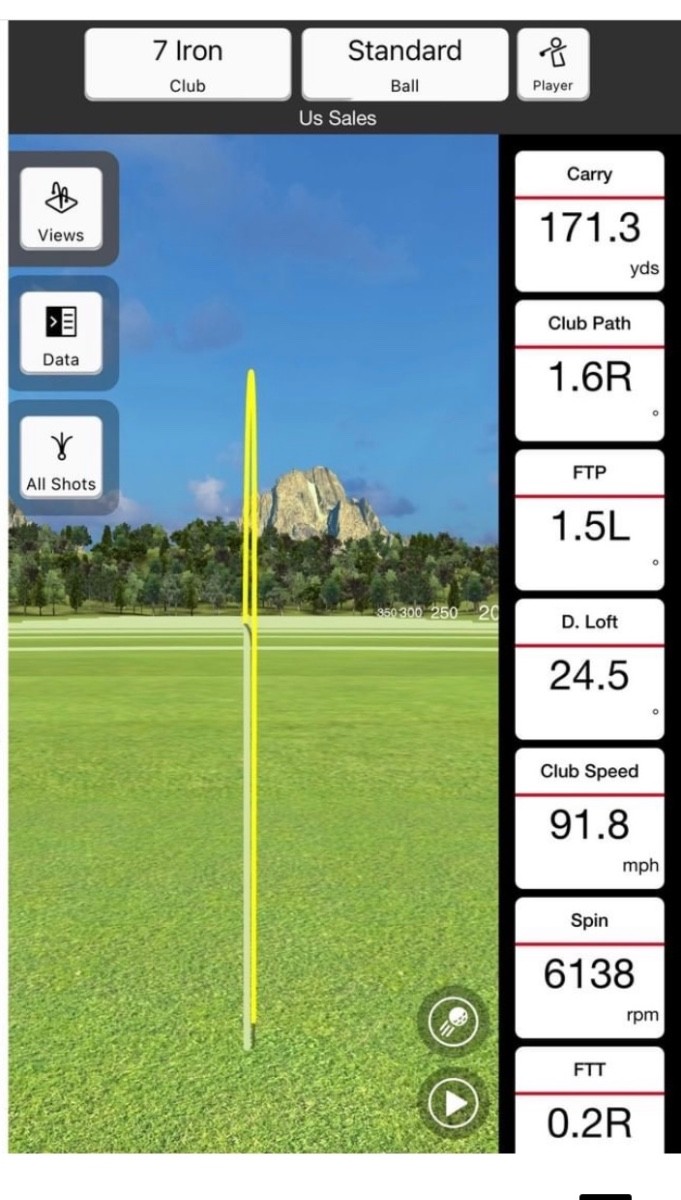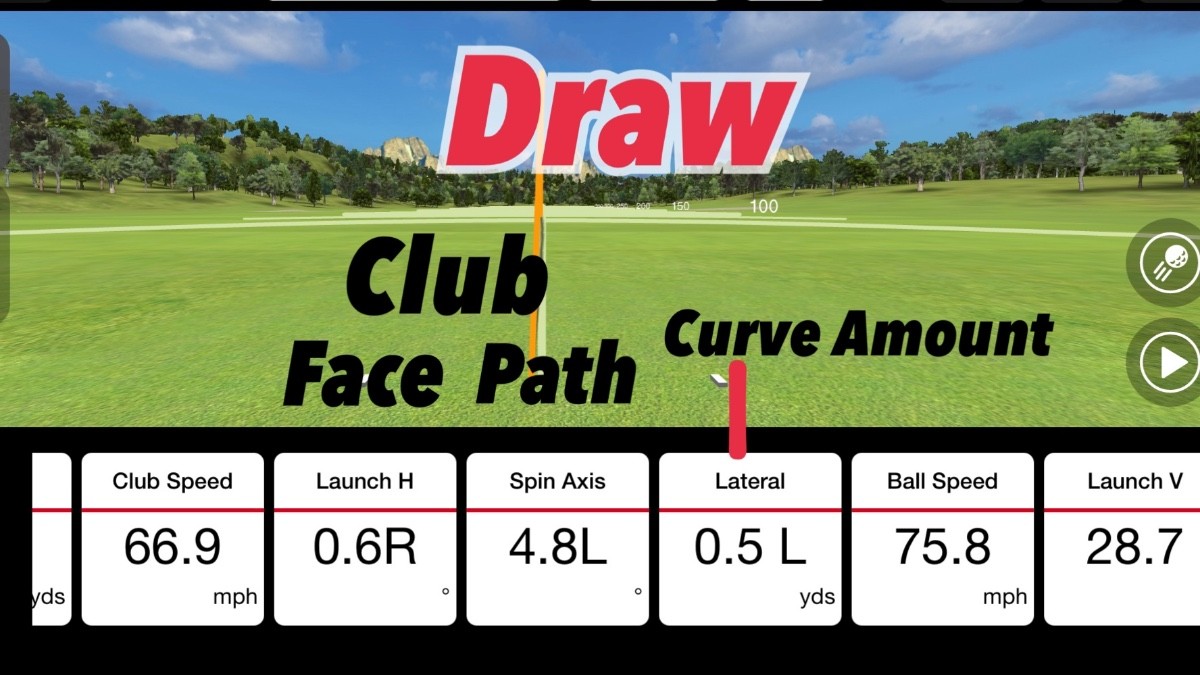
Garry
Member-
Posts
12 -
Joined
-
Last visited
Recent Profile Visitors
The recent visitors block is disabled and is not being shown to other users.
Garry's Achievements
-
Dude, I'm getting a Mevo+!
Garry replied to GolfSpy MPR's topic in Training Aids, GPS Devices, Apps, Accessories & More!
It’s the same camera as the X3, which is $15k but the X3 tracks 55 parameters… Mevo+ tracks 27…. But it’s also more than just a camera? Fusion tracking combines 3D tracking radar and camera/mage processing for data. It’s basically all in the pro package video… https://www.instagram.com/tv/CVgF1oaId8b/?utm_medium=copy_link -
Dude, I'm getting a Mevo+!
Garry replied to GolfSpy MPR's topic in Training Aids, GPS Devices, Apps, Accessories & More!
Compared to what? Possibly Flightscope has been tracking club head data longer than any vendor? I think the closet comparison might be -- GC2 with HMT I think was about $12k at one point. I know a friend that had at home about 5 years ago a GC2 and used a Flightscope for club head data, he did that instead of buying HMT. Fusion tracking is doppler combined with camera tracking. Trackman does club data for sure. I use Mevo+ at home, and Ill order the Pro package in January, but I also use Trackman at the range and club. I have not noticed any differences at all, as to what I’m working on in the golf swing. I’ve also used the Quad, and I’m still working with the same golf swing concept's. As to accuracy seems to me Mevo+ with fusion, pro package with new data and the Titleist Pro V1 RCT would be a great test coming in January. The New Data Parameters Include: Club path Face to path Face to target Vertical swing plane Horizontal swing plane Low point Dynamic loft Vertical descent angle Curve Speed profile Acceleration profile That's allot of data any golf instructor in the world could get from a player located anywhere. -
Dude, I'm getting a Mevo+!
Garry replied to GolfSpy MPR's topic in Training Aids, GPS Devices, Apps, Accessories & More!
Includes a new total of 27 data parameters… like Face to Path… It’s not just a game changer it’s game over…. https://www.flightscopemevo.com/propackage -
Dude, I'm getting a Mevo+!
Garry replied to GolfSpy MPR's topic in Training Aids, GPS Devices, Apps, Accessories & More!
-
Dude, I'm getting a Mevo+!
Garry replied to GolfSpy MPR's topic in Training Aids, GPS Devices, Apps, Accessories & More!
Fusion Tracking is Flightscope’s most advanced tracking available currently in the X3 and xI Tour but not Mevo+… What’s does that really mean more accuracy to current Mevo+ parameters? Or does it mean Mevo+ will have face, path & face to path data parameters? Verse the manual approach showed above…. x3, xI and Mevo+ compared: https://flightscope.com/products/product-comparison/ -
Dude, I'm getting a Mevo+!
Garry replied to GolfSpy MPR's topic in Training Aids, GPS Devices, Apps, Accessories & More!
Some years ago to improve and avoid dealing with a two way, I decided to go with a draw as primary shot pattern. With Mevo+ I watch three parameters as guide or rough estimate when I practice a draw: Launch H (Face=R), Spin Axis (Path=L) and Lateral (Curve)… Screenshot is a 50* degree gap wedge, on course I’ve seen it draw about 1 foot draw on a 100 yard shot…. I watch those three parameters on all clubs… -
Most Successful “Swing-Thought”
Garry replied to BenjaminButtonz's topic in Lessons, Drills, Mental Game, and Fitness Tips
My swing thought is an image. A draw image so I visualize hitting a draw shot to the target before every swing. Everything is draw based on that image inside path, face with early squaring at the top and so on. The AMG left wrist early squaring, closing or face rotation is done at the top has helped allot. By contrast coming inside and waiting to square is too late to time consistently. Matt Jones is a draw player and has a great step-drill practice swing before each shot and I’ve incorporated into my routine. Adam Scott has an interesting practice routine in that on the range he tries to fade it and then on the course when he plays he tries to draw the ball. Everything follows the image/target I’m trying to hit with a draw more or less. -
Garmin Approach R10
Garry replied to vandyland's topic in Training Aids, GPS Devices, Apps, Accessories & More!
I own a Mevo+ & practice on a TM... I will be buying a Garmin, this winter. — There is one other major feature here not yet mentioned that — GC Quad or Trackman does NOT have. That is simulation of your home course or other local courses you actually play... “42,000+ VIRTUAL COURSES” “You and up to three other golfers can likely play your own home course or even a course you’re going to play on your next trip with virtual rounds2 for more than 42,000 worldwide courses.“ I play some courses up to around 150 miles from home. I’ve had a Garmin Watch since version 1. They say “likely your home course” . But I’ve never played a course in or out of State that the Garmin Watch didn’t provide yardages... This LM must interface with that golf course database... This means I can do practice rounds in my backyard on courses I routinely play with the tees & yardages available on demand. I’m sure the graphics aren’t simulator quality but that still would work great for practice rounds, I hit into a net anyway. -
Using pressure plate data
Garry replied to GolfSpy MPR's topic in Training Aids, GPS Devices, Apps, Accessories & More!
I bought the smart soles in August so I’ve spent time trying different approaches to using the pressure data. Basically I’ve gone full circle on how to use them and then back again. Here is the order I’m using currently: 1) Address for each 2) Putting 3) Chipping & Pitching 4) Wedge Shots 5) Irons 6) Driver. Boditrak does webinars to PGA teaching professionals on how use the technology. That’s been the most informative because teaching pros see every variation of golf swing and body type. One of the main full swing methods they teach for students to use is toes curled or lifted up so your weight is balanced between the ball of foot and heel. I think that is how Sam Snead used to hit shots barefoot with his toes up. Boditrak also talks about marathon runners do not run on there toes. AMG and others like Golf ZEN Mechanics are using shift boards in different ways to teach students the timing and amount of pressure in the backswing and downswing. Golf ZEN is basically is fixing foot mechanics that before other swing issues. Basically the main drill I use is doing ¾ swings on a shift board. I heard one instructor say they no longer care what style of swing you have, almost like its become just a matter of simple astetics, if you get the downswing timing and ground pressure right they are all close to the same at impact. One I found to help understand whats going on is on the short game, Boditrak is teaching that on chipping and pitching the weight starts left and stays left 55-65 lets in that range, without the center of pressure fixed with the salted smart crosshair. Once you get to things like 30 yard wedge shots you start left 55-65 or 50-50 pressure goes right 65-75 then back left, you would never see that happening in a photograph or a video. SHORT GAME TECHNIQUE WITH BODITRAK- Chris Ryan Golf https://www.youtube.com/watch?v=SsQD6dWmszs&feature=youtu.be -
I bought a pair August. So I have had this for a while and use then frequently, even putting with Ex Putt. After watching allot of Athletic Motion Golf, videos what they use a shetic shift board. So I made a couple DIY shift boards a couple of years ago and now alternate between ¾ swings on the shift board and then replicate it with smart soles in practice mode. L to L drill type stuff. DIY shift board platform 12 by 24 and a 12 inch by ½ thick 1.5 wide piece screwed into the bottom middle of the platform. $5 bucks .est With the shift board you want to really hear it hitting the ground going back and then in just before or no later then transition coming through, So at the top of the swing your starting or already re-centered 50/50/. Watched allot of boditrak videos and swing catalyst videos and so on. Golf Zen Mechanic has some very good videos on “foot mechanics”. Golf Zen Mechanic (A DIY Shift Board in background) https://www.facebook.com/zengolfmechanic/videos/1178632832473418 Boditrak Instcrutor using Smart Soles https://www.youtube.com/watch?v=YqkJOqyaQXc I have used most of the other drills, a shift board seemed a faster way to learn. Boditrak basically is saying that there is --- much more left leg force and much earlier in PGA Tour players than amateurs consistently in the data. AMG says its a timing not a strength or physical issue, accross varitions of golf swings. Another example was I saw some years ago, they asked long driving competitors if they could only do one exercise what would it be? Ended up being one legged squats (left leg) or single (left leg) presses on a machine. My example and not a very good one is its akin to kick starting a motorcycle only with the left leg its not just a shift and turn. The bottom line its much more force then you would otherwise think or feel and earlier then you think or feel that and you pick up with smart soles. Even in putting what I thought was perfect set up was a little to much weight in the heels.
-
2020 Official Member Review: Exputt putting simulator
Garry replied to StrokerAce's topic in Forum Testing Reviews
One reason I’ve varied speed setting was the difficulty going from fast greens to slower greens, its very easy for me to go from slow greens to faster greens. I found if having to choose I would be vary the speed of sessions by two 7 to 9 or 8 to 10 then 10 footers followed random up to 50 feet – 40 putts. If you see 9 foot short or long on 30 plus putts then you might go with 30 or 40 foot fixed and dial it that range. I think it reads out to 100 feet not sure why that’s not tracked as a setting it could its unreliable outside say 60 feet, or matt issues hitting putts that hard. ExPutt Improvement Not sure if this was mentioned, the only -- major unseen putting variable with ExPutt that would make a major difference would be the launch angle of putts which effect roll, and direction. It’s probably not possible at this price point. SAM Putt Labs equates launch angle importance with direction and face angle. Sikk putters address that with consistent launch face angles, Ive never tried one or seen one in play. Quintic Definition: “The ideal launch angle (for most greens) is between 0.75 and 1.25 degrees. Slower greens (or greens that have a lot of grain) require up to 2 degrees of launch angle to get the ball up out of its resting position and riding on top of the grass.” Sam Putt Labs: “On fast greens a flat launch angle of the ball and initial top spin are preferred, to avoid skidding. Skidding is supposed to introduce errors in ball direction, -- in contrast a rolling ball is keeping the direction better. The factors influencing launch and spin are static loft of the putter, shaft lean at impact, vertical putter path at impact and ball position.” -
2020 Official Member Review: Exputt putting simulator
Garry replied to StrokerAce's topic in Forum Testing Reviews
I’ve had the ExPutt for almost a year I purchased last December. So I went through a full winter and golf season using the ExPutt. Prior to that for 4-5 years I used a Puttist before it broke it, which measured distance via impact in distances of 1-50 feet, with 3 speeds and a couple of program variations. The ExPutt in my view will absolutely get you to teach yourself putting and we then teach ourselves how and what to improve at putting. I’ve never posted to any my golf spy forums before but I did leave a comment on the ExPutt in the 2019 Editor Choice Awards about ExPutt. I no longer use any other mat. https://mygolfspy.com/2019-editors-choice-awards/ The central issue as was mentioned before is translating ExPutt or for that matter Puttiest to on course game improvement, which it does no question. I was a member at a private club playing one course 90% of the time so it was easy to dial in a practice speed. Now I play a combination of private and public courses. So I run through a routine using speed 7 and 9. I also looked at a fair amount of PGA tour verses various handicap levels for example PGA tour versus 17 handicap data. The 17 handicap at 5 feet average is 50% making the putt, tour players average 50% at 8 feet. Data shows outside of 16 feet a 17 handicap player will 3-putt more than 1-putt, that distance for Tour players is 2.0 at 34 feet where greater odds of a 3-putt verses a 1-putt. Also putting data seems to point out that were face and path really starts to effect putts is 10 feet, a degree one way or another it’s missed. So without practicing with like an ExPutt its all guesswork, and you could be missing allot of putts and not know why you missing for years. Usally it’s a pull how though? Face or Path or both. 1) I found I had to develop a -- varied practice routine. 2) I had to practice a routine at two different speeds for me 7-9. 3) I also go through my actual on course set up routine periodically in practice sessions ie go behind the ball get into set-up and so on. I believe Tiger had a routine they measured and timed by seconds and it didn’t deviate much, over two years. 4) The only other modification not mentioned was, I stand on a section of carpet the same height as the matt. I prefer to stroke putts slightly ascending, and wanted to be absolutely level. 5) There is three categories of putts I look at: 1) Short Putts Up to 10 feet with a new high chance of making the putt. 2) Consistent lag puts. Putting data shows outside of 16 feet a 17 handicap player will 3-putt more than 1 putt, that will change big time with practice. 3) Unexpected putts this were you start know it’s really working such as I’ve had downhill 30 foot putt with 6 feet of break and it goes in. I think we visualize distance correctly (like throwing a ball) but it doesn’t translate to putting without practice at least not consitentily. This is the ExPutt practice routine I use to putt better on the course: 1) Two sets: 20 putts at the 10 foot fixed number using both speeds, total 40 putts. I started at 8 out 20 made, highest was 19 out 20. First at speed 7 and then 9. This gets me under some degree of pressure, and even when you really improve lag putting your still going to get 5-10 foot putts. 2) Two sets: 20 putts at the 10 foot random using both speeds, total 40 putts. I have no idea what distance of the next putt will be and creates pressure, and using two speeds. 3) Two sets: 20 putts increasing from 5 to 50 feet. Using both speeds, total 40 putts.. 4) Two sets: 20 putts random setting from 5 to 50 feet. Using both speeds, total 40 putts.. In total about 160 putts, this gets me ready for must all putting scenarios I ran into on course. I try on every putt recall a putt and visualize the putt and then to feel the speed though I know in the back swing approximately the distance a putt will go. I do occasionally 6 and 12 speed… Really slow and really fast and visualize uphill and downhill putts. I also use a sand wedge to practice putting, aligning the ball towards the toe of the putter and also specialty chipping shots using the tip of the putter, for just in the rough off the green. The toughest question I saw I think was practicing in 2D verses 3D and so on. For me it took a couple of sessions hitting trackman indoors to adapt. After almost 5 years of 2D putting first with Puttist now ExPutt, I believe it’s the reverse going from 2D to 3D it feels mush easier, you have a fair amount of time to visually dial in the distance on a real putt. Depending on how you at gauging distance, line and break and so on. 10 years ago I used paced off putts but now I see it and feel it and let it go. Allot of tour pros practice putting distance control with their eyes closed I think Johnny Miller started it, Vijay may have done in tournaments, Paddrig talks about it and Sergio just won a tournament with his eyes closed. I do practice occasionally with my eyes closed just to test it, I believe after awhile you will putt in the total dark and hit the distance. The only other weird thing I do is put alignment stick in the backyard at about 40 feet. So I can visualize distance, anything you could practice visualizing distance in the backyard would work. Bottom line you have to improve competence good stroke, tempo, speed and so on and then confidence starts increasing.







